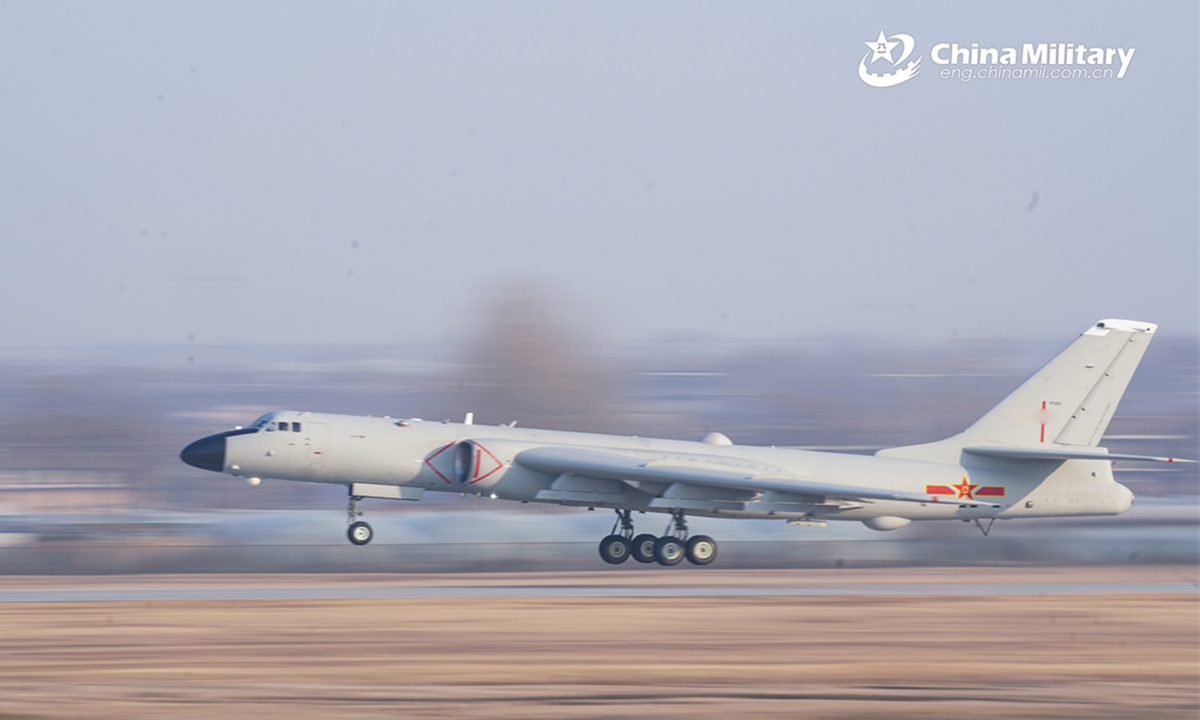The US has recently ramped up its trouble-stirring moves in at least three directions around China to build regional tensions and reinforce its containment of China. Analysts said that Washington has always taken advantage of regional conflicts to serve its selfish geopolitical interests and warned of the consequences of serving as Washington’s proxies and cannon fodder.
The US State Department on Wednesday said that the US government recognizes the so-called “Arunachal Pradesh,” referring to the Zangnan area in Southwest China’s Xizang Autonomous Region, as part of India, Reuters reported on the day.
In response, Chinese Foreign Ministry spokesperson Lin Jian said at a regular press conference on Thursday that Zangnan is China’s territory, a basic fact that is undeniable. The China-India boundary question is a matter between the two countries and has nothing to do with the US side.
It is known to all that the US has consistently spared no efforts to provoke and take advantage of other countries’ conflicts to serve its selfish geopolitical interests, Lin said.
In the South China Sea, US Secretary of State Antony Blinken who has just visited the Philippines, reiterated on Tuesday the US’ “ironclad commitment” to defend Manila amid rising tensions with China, CNN reported on Wednesday.
Top leaders of the US, Japan and the Philippines are scheduled to hold a summit in Washington on April 11, while the US and the Philippines are planning to hold this year’s edition of the Balikatan joint exercise from April 22 to May 8, according to media reports.
In East China, the US continues to sensationalize the Taiwan question, with Admiral John Aquilino, the leader of the Indo-Pacific Command, claiming in a prepared testimony to the US House Armed Services Committee on Wednesday that the Chinese mainland is on track “to be ready to invade Taiwan by 2027,” Bloomberg reported.
Observers noted that in just a few days, the US has stirred up troubles in at least three directions surrounding China to build up regional tensions, in order to form more “small military cliques” similar to AUKUS and QUAD in multiple directions to encircle and contain China.
Experts reached by the Global Times on Thursday said that the US has added India in its so-called “Indo-Pacific Strategy” to complement its island chain strategy to contain China.
For a long period of time, India’s independent diplomatic policy and non-alliance strategy made it hard for the US to use it as a pawn. However, the US in recent years has been sowing discord between China and India, taking advantage of the two countries’ border disputes, experts pointed out.
Located in the southern part of the first island chain, the Philippines has been one of the weakest links in the island chain strategy compared with other locations such as Japan, the island of Taiwan, Guam and Australia in terms of military capabilities, analysts said. They noted that since the US lost its deterrence of using aircraft carriers to flex its muscles in the South China Sea thanks to Chinese military’s comprehensive capability to strike moving vessels, especially the deployment of anti-ship ballistic missiles, it is seeking more footholds in the South China Sea.
In 2023, the US gained access to four additional military bases in the Philippines, ramped up joint military exercises and patrols, and instigated the Philippines to provoke China over Chinese islands and reefs in the South China Sea like Ren’ai Jiao (also known as Ren’ai Reef) and Huangyan Dao (also known as Huangyan Island), then threw mud at China over its legitimate, reasonable and restrained control measures, observers said.
Ding Duo, deputy director of the Institute of Maritime Law and Policy at the China Institute for South China Sea Studies, told the Global Times that the US, the Philippines and Japan have basically formed a small multilateral mechanism against China, and their upcoming summit could see deepened cooperation in terms of military, maritime situational awareness and intelligence sharing.
Military expert Fu Qianshao told the Global Times on Thursday that the US has long been sensationalizing the Taiwan question, but it was the US that had politicians provocatively visit the island, announced arms sales from time to time, and even sent military personnel.
‘Proxies suffer losses’
A Beijing-based military expert who requested anonymity told the Global Times that the US’ global hegemony has been severely impacted by the recent conflicts around the world, its military capability is on the decline due to its de-industrialization, it has acknowledged China’s rapid national defense modernization progress, and that it feels that it cannot face China alone.
A lesson people can learn from recent conflicts elsewhere in the world is that military proxies suffer the most losses, the expert said. “When China can hit moving aircraft carriers, which has forced the US military to adjust its strategy, why would any country become US proxies and Washington’s cannon fodders?”
China follows a national defense policy that is defensive in nature, but it will resolutely safeguard national sovereignty, security, territorial integrity and development interests, experts said, noting that being played by the US as pawns could lead to unnecessary disasters that benefit only the US.













